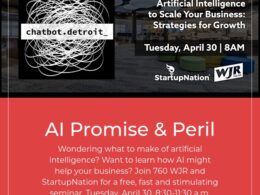I recently heard a talk by Kodi Foster, Viacom’s VP of Data Strategy, as part of PSFK’s “Future of Advertising” conference series. It was all about how Viacom is rethinking data mapping for creative purposes across channels, brands and campaigns. This is the future of brand development and creative strategy, and you can find the talk here.
One of the key takeaways for me wasn’t their process, but the brief discussion around the impulse gene and the part it plays in connecting to consumers. What’s an impulse gene in brand development, you ask? Kodi explains it this way:
By looking at consumers who are heavy purchasers of relevant categories who are also brand agnostic within that category, we can create a profile rich with consumers likely driven by their impulses.
In other words, people are organically habitual (they find comfort in what they know and trust intrinsically) and impulses that trigger a comfort or habit are a stronger way to identify consumers (and thus craft campaigns) than merely looking at demographics of likeminded people. Impulses are persuadable triggers that drive action. Demographics are just that: broad and arbitrary, lumping people together in categories that are much too broad.
So we know there is an impulse gene. Now the question remains: what do we do with it?
You have to look for what triggers impulse in your audience. It’s not enough to search for keywords, you have to look to data to find your custom audience segment: what they search for, read, watch and share. It sounds like what you already do, yes. But it has to be much deeper and nuanced to work effectively.
Also on StartupNation.com: Media Branding
In order to splice the impulse gene, you have to think at the micro level.
We’re looking for the impulse to set off a reaction (due to habit), that gives your target the reward they are searching for. I agree with Kodi, that this is a “more than” data mining step. To truly create content and campaigns that hit your audience, you have to think about more than the broad strokes. You have to think about experience more than content. You have to target emotion more than “noise.” Look for fans and trust over viewers and clicks. In an ever-segmented digital world, it is not enough to think about big buckets. To be truly affective, you have to think tighter and know that impulse triggers have the ability to bring in wider audiences than what you might expect. It’s the difference between demographics and psychographics. It’s thinking about active, impulse-driven engagement strategy. It truly is reverse engineering.
There is nothing new in this thesis. Viacom didn’t invent it from scratch. But the ideas in this talk echo what I’ve been discussing in other articles for quite some time: that we have to think differently in today’s marketplace. It is not enough to have a campaign, or to say you’re focused on a wide swath (like millennial men aged 19 to 32 who like football, craft beer and beards). Consumers today demand value and have an expectation for focus and niche.
While it may seem counterintuitive, as well as expensive, to go after the smallest possible market, it is not. Loyalty breeds following, and engagement creates value. With that said, we are not talking about creating the “(insert person’s name here) channel” for every consumer. But to truly get to the brand’s use of impulse gene, creators need to think about what will trigger the impulse and how to build off that. That, my friends is getting to the core of brand development.
_______________________________
Patrick Jager is the CEO of CORE Innovation Group – expert strategy and implementation in media, communications and business development across a wide spectrum of industries.






